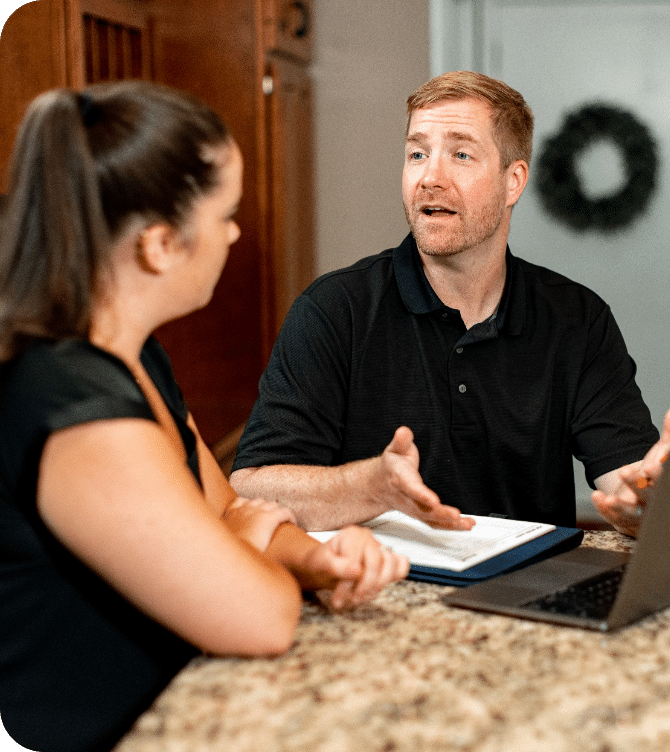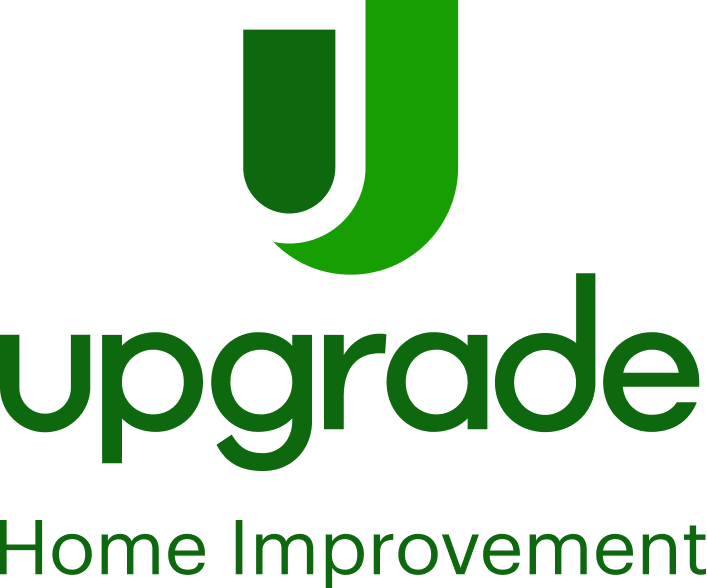
Drilling the holes for slab pier installation
Water is used around the slab pier drill. This is done to keep the dust done and also to lubricate the drill bit. It is important to get a clean hole drilled so the pier's bracket has a solid piece of concrete to grab onto.
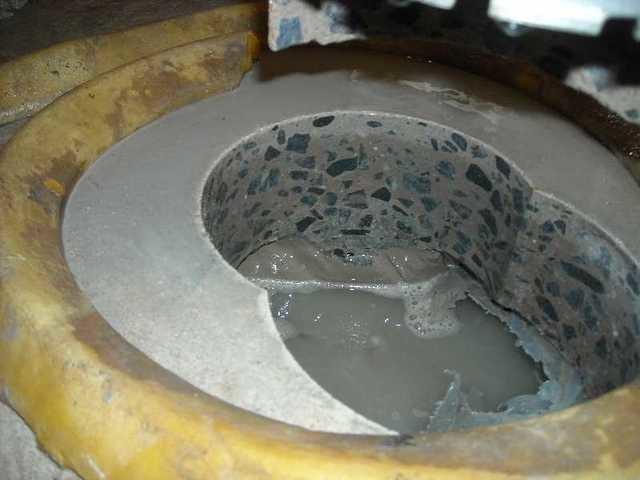
Drilling carefully for slab pier installation
When the crew drills a hole for a slab pier sometimes they find a pipe or large rock just below the slab. When this happens they can simply move the bit over a little and drill another hole. It is more common than you might think, so we know from experience that this process does nothing to effect the overall system.
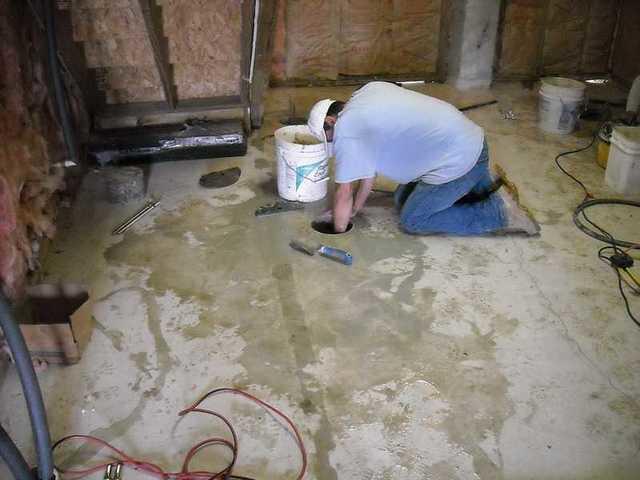
Digging out under the slab to make room for the bracket
The dirt directly under the drilled hole has to be removed by hand in case there are pipes that aren't seen from above. The under side of the slab is felt to be sure there in a clean and flat surface for the bracket.
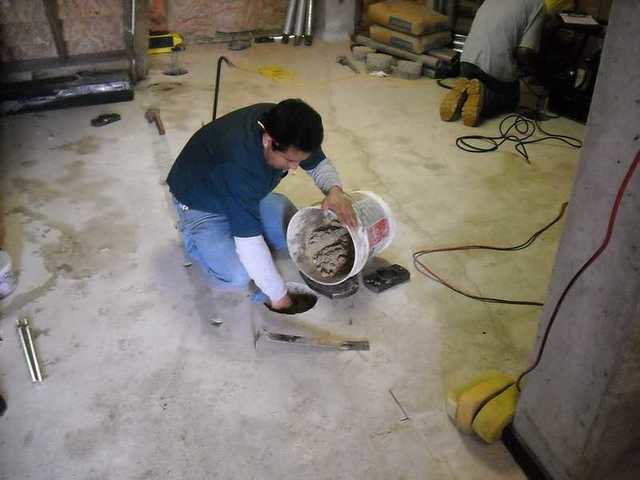
Carrying out the excess dirt
DryZone takes extra care of your home by using buckets and cleaning up the area. We try to take as much of the mess with us as humanly possible. The idea it to be able to return to your normal life the very next day, without having to clean up after us.
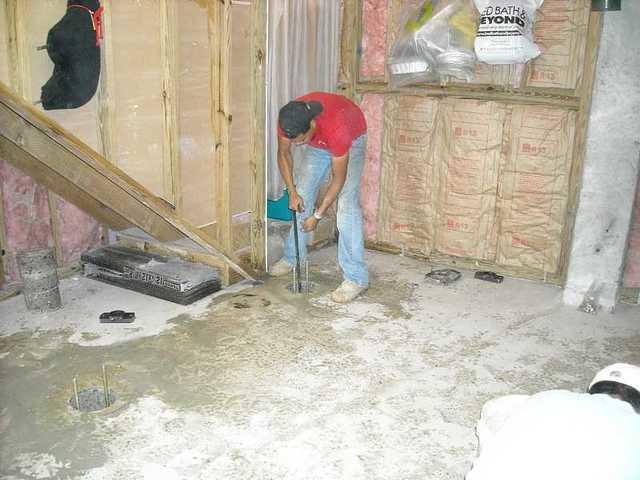
Testing the hole for obstructions
There is no telling what kind of things are under the slab. I long metal rod is slowly pushed into the ground to test for large rocks, underground pipes, and other obstructions.
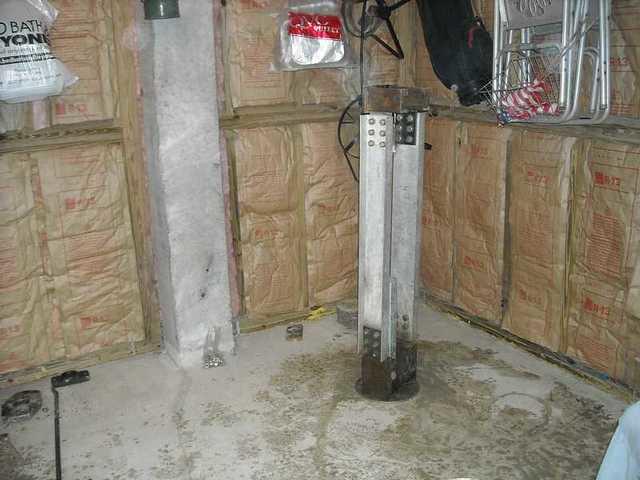
Setting up the installation equipment for slab pier
This large stand will hold the hydraulic ram that pushes each pier into the ground. This is done for each pier, in each hole until the entire section is installed.

Stacking the products onsite before slab pier installation
All of the pier sections and concrete are brought onto the jobsite and stacked off to the side. This cuts down on time because the crew doesn't have to continue to run back to the truck for additional supplies. If there a lot of piers, they may have to repeat this step several times. DryZone has been doing this so long that there is almost a muscle memory for how to do it efficiently.
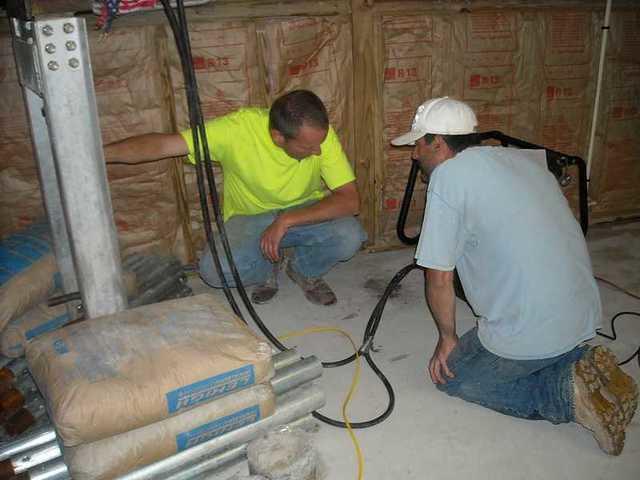
Pushing the piers into the ground
Two crew members work each pier site. They closely monitor and record the pressure readings and depth of the piers. DryZone keeps great records for each job. Not only does this answer any future questions about how the job was done, but it also helps on future installations. For instance, if we have done a project in the area previously, we can see how deep the piers went and any special conditions that were met.
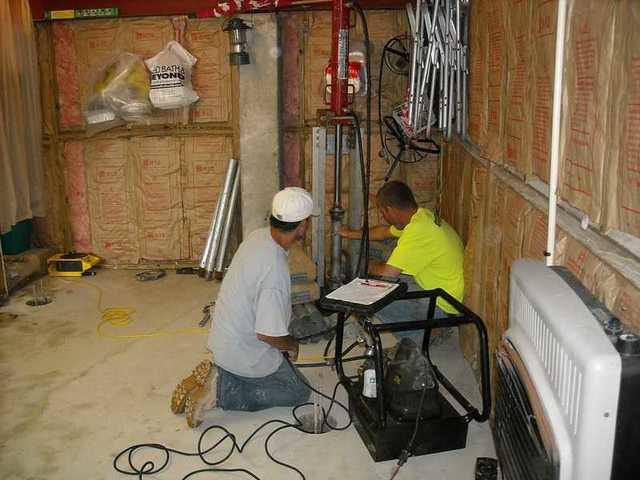
Topping off the last pier
The ram only pushes so far, this is when the crew uses a "dummy" pier. It is basically a section of pier with a handle welded to it. It is used like a lead section to get the last little bit of permanent pier all the way down. It is then removed and returned to the truck.

